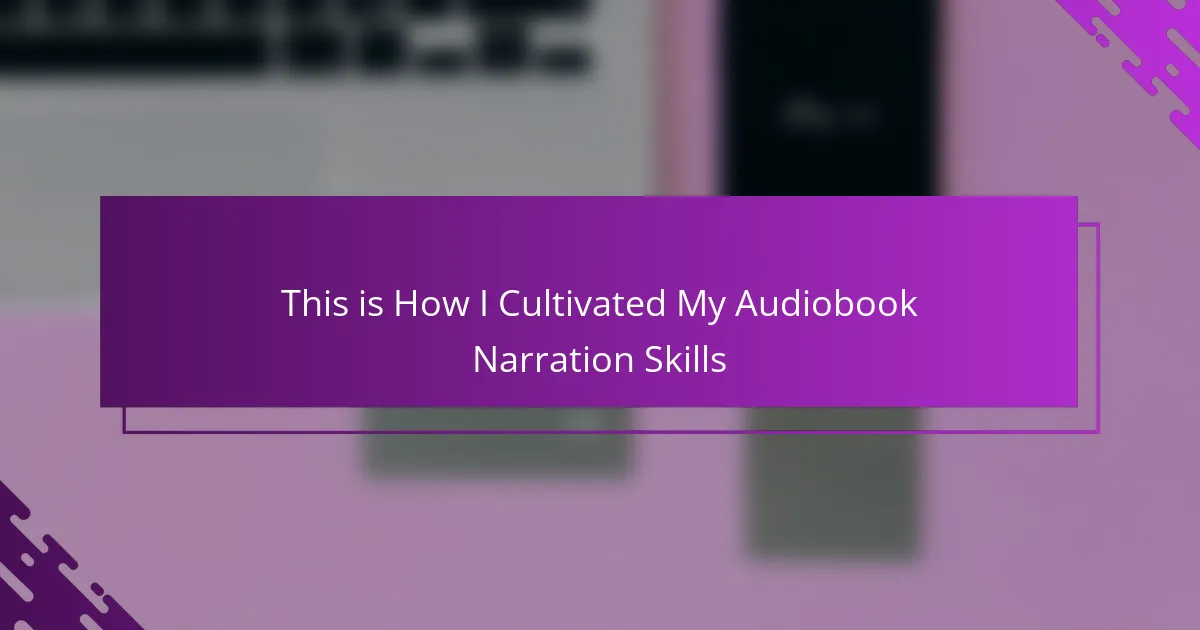Key takeaways
- Audiobook narration requires storytelling skills, including effective pacing, tone, and emotional connection with the audience.
- Investing in quality equipment, such as a condenser microphone and a pop filter, significantly enhances recording clarity and professionalism.
- Practicing vocal techniques, including breath control and articulation exercises, improves delivery and listener engagement.
- Regular feedback and self-review are essential for growth and refining skills, along with setting small, achievable goals to maintain motivation.
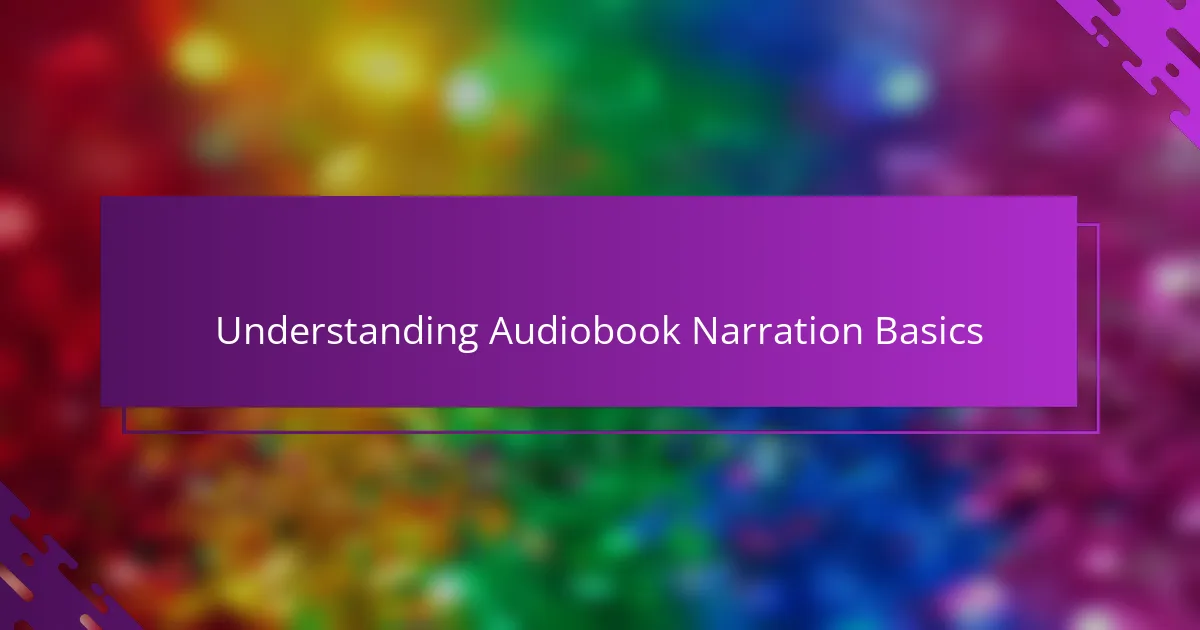
Understanding Audiobook Narration Basics
When I first dove into audiobook narration, I quickly realized it’s not just about reading aloud; it’s about storytelling. Have you ever noticed how a simple change in tone can make a character come alive? That’s the heart of narration basics—using your voice to create vivid images in the listener’s mind.
Understanding pacing was a game changer for me. I used to rush through pages, eager to finish, but slowing down helped me connect emotionally with the story and gave listeners time to absorb every nuance. It made me wonder: how often do we overlook the power of silence and timing in communication?
Another crucial element I grasped early on was consistency. Keeping character voices distinct without overdoing it requires practice and focus. I found myself replaying segments, tweaking my delivery until the narration felt natural yet engaging—an ongoing process that’s both challenging and deeply rewarding.
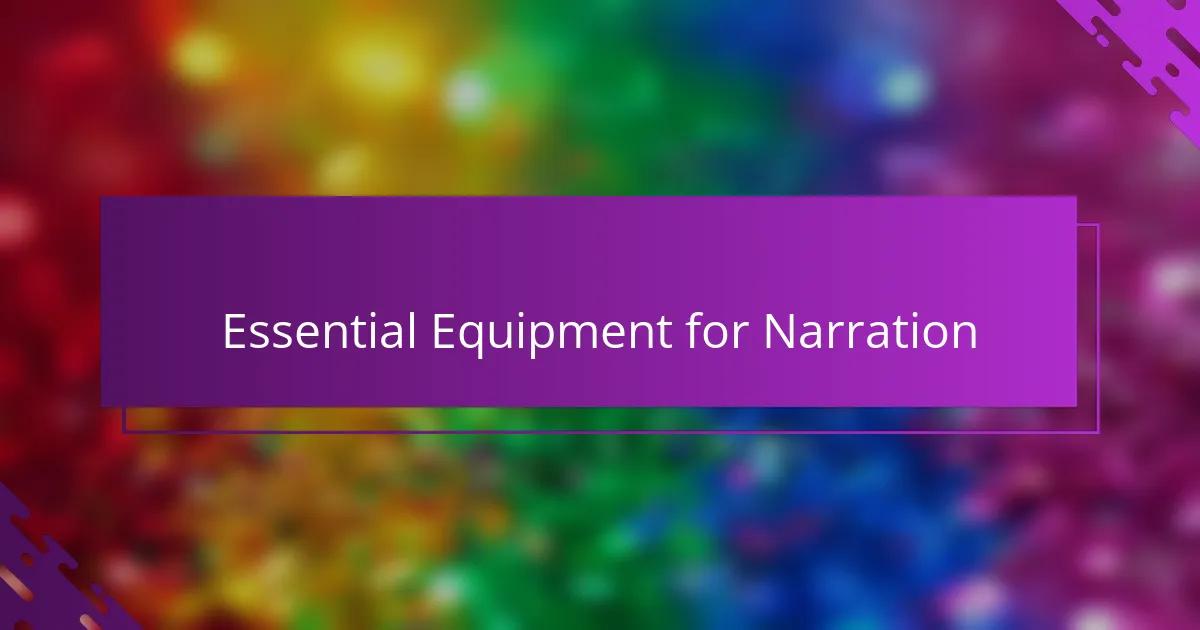
Essential Equipment for Narration
For me, having the right microphone was like discovering a secret weapon. I started with a basic headset mic, but it wasn’t until I invested in a quality condenser microphone that my recordings truly came to life. Don’t you find it amazing how crystal-clear sound can make your voice feel present and intimate to the listener?
A pop filter quickly became my best friend—those popping ‘p’ sounds used to annoy me endlessly. It’s a small piece of equipment, but it made my recordings sound cleaner and more professional. I often wonder why I didn’t get one sooner; it saved me so much time editing out distracting noises.
Of course, recording in a quiet environment is essential, but I realized that a simple soundproofing setup changed everything for me. Using foam panels around my corner made a huge difference in reducing echo and background noise. Have you ever noticed how distracting little sounds can be when you’re fully immersed in a story? That’s why this setup helped me focus on delivering my best performance every single time.
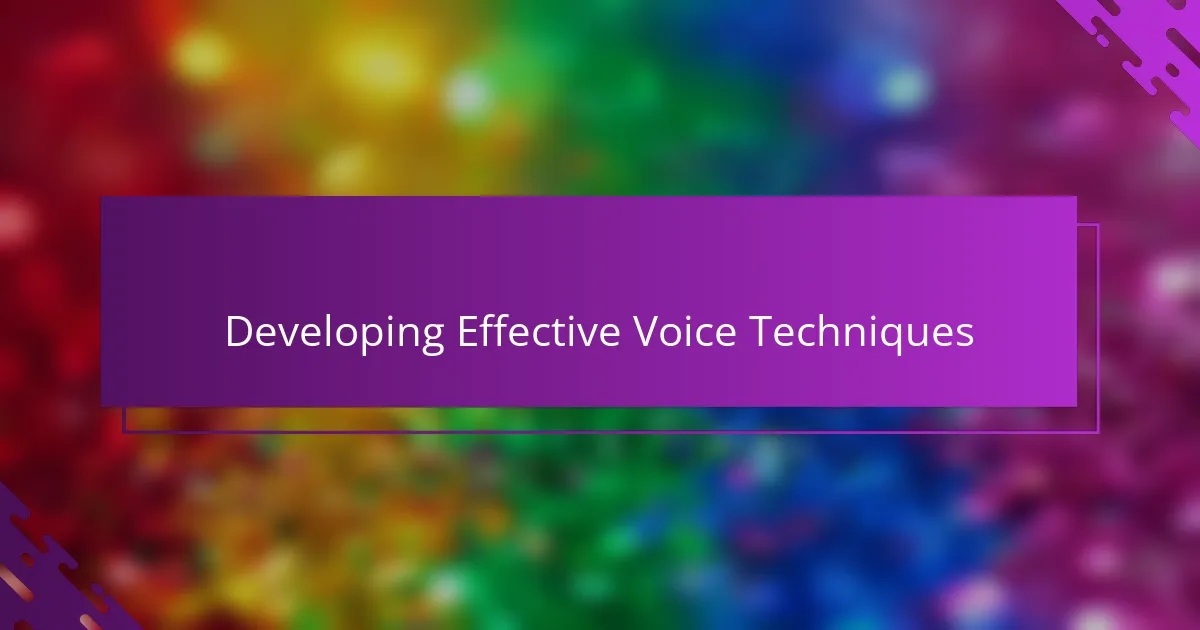
Developing Effective Voice Techniques
Developing effective voice techniques became one of the most transformative steps in my narration journey. I discovered that controlling my breath not only helped me maintain stamina during long sessions but also added depth to the emotions I conveyed. Have you ever tried holding a note or pausing just long enough to build anticipation? That subtle control can completely change the listener’s experience.
Experimenting with vocal variety taught me how powerful even slight shifts in pitch or volume could be. Sometimes, softening my voice created intimacy, while a stronger tone conveyed excitement or tension. It’s fascinating how these choices make a story come alive, isn’t it? I learned to treat my voice like an instrument, always tuned and ready to express every nuance.
Finally, practicing tongue twisters and articulation exercises became my secret weapon for clarity and precision. At first, I felt silly repeating phrases aloud, but over time, it sharpened my diction and prevented those pesky mispronunciations. I often remind myself that every word counts in narration, so honing these basics has made a huge difference in how I connect with listeners.
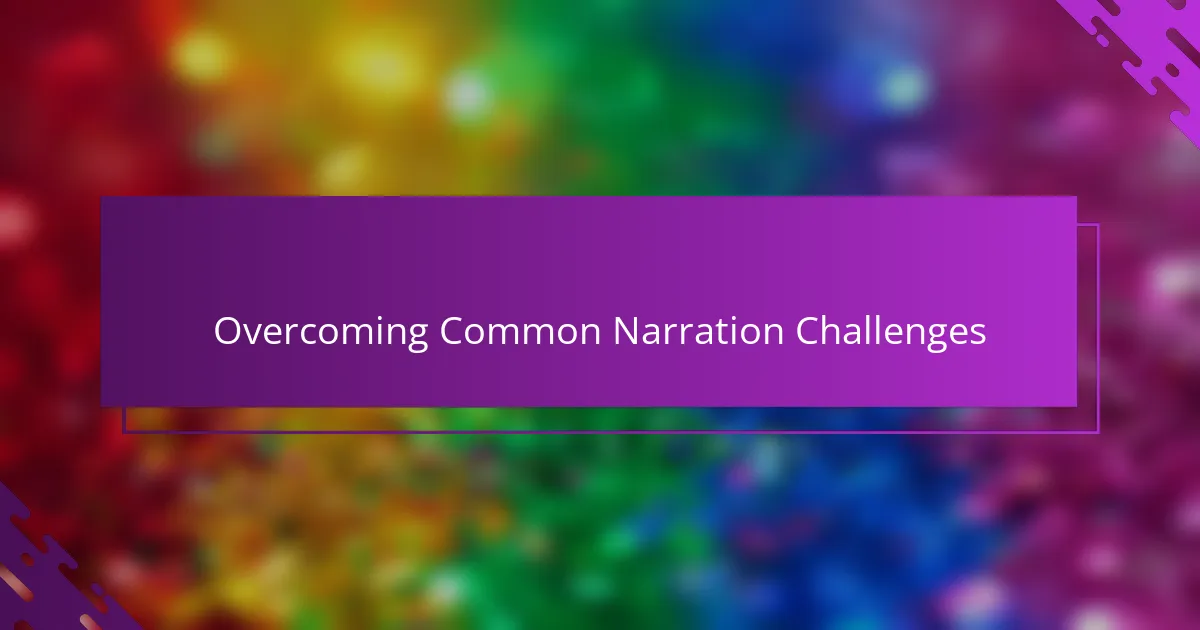
Overcoming Common Narration Challenges
One of the biggest hurdles I faced was battling monotony in my voice. Early on, I caught myself slipping into a dull, flat delivery that risked losing listeners’ attention. Have you ever felt your energy fade halfway through reading? I learned to consciously inject emotion and excitement, imagining myself as both the storyteller and an eager audience.
Stumbling over tricky pronunciations was another challenge that kept tripping me up. I still remember one session where I had to stop repeatedly because a character’s name just wouldn’t come out right. Instead of getting frustrated, I took it as a cue to slow down and practice those tough words until they rolled off my tongue effortlessly. That patience paid off big time.
Background noises and sudden interruptions also threatened to ruin my takes more often than I liked. After a few awkward moments, I established a ritual to prepare my recording space and alert my household before starting a session. These small but crucial steps helped me create a consistent environment, so I could fully immerse myself in the story without distractions. Have you found little habits like this that turn your narration sessions around?
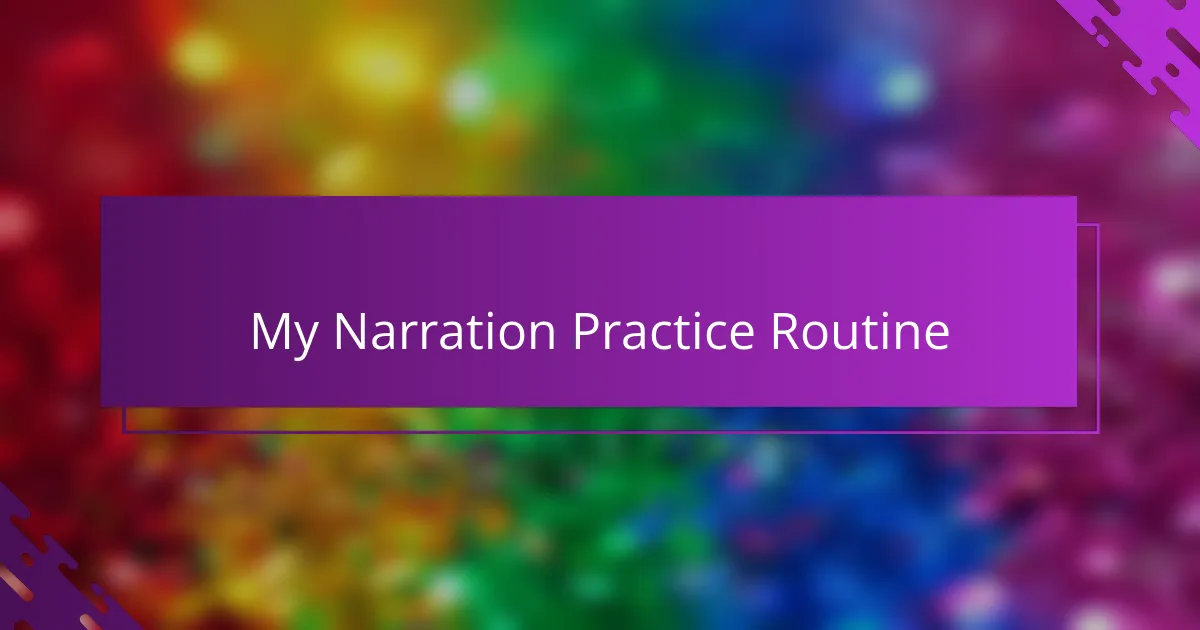
My Narration Practice Routine
My narration practice routine quickly became my daily sanctuary—a dedicated hour where I focus solely on my voice and storytelling craft. I remember those early days, struggling to sustain energy long enough, but setting that consistent time helped me build stamina and confidence. Have you ever noticed how just committing to a routine can shift your progress from random bursts to steady growth?
I start each session with warm-up exercises, like humming and gentle tongue twisters, to loosen up my vocal cords. These small rituals became surprisingly soothing and even fun, turning what once felt like a chore into an enjoyable habit. It’s amazing how a simple phrase, repeated with care, can sharpen clarity and prepare you for whatever story lies ahead.
Then, I usually pick a challenging passage and read it slowly, experimenting with different tones and pacing. Sometimes, I record myself and cringe at my first take—does that happen to you? But revisiting those recordings is where the real magic happens. I analyze what worked, what felt stiff, and then practice until the delivery feels as natural as conversation. This deliberate repetition not only refines my technique but deepens my emotional connection to the text.
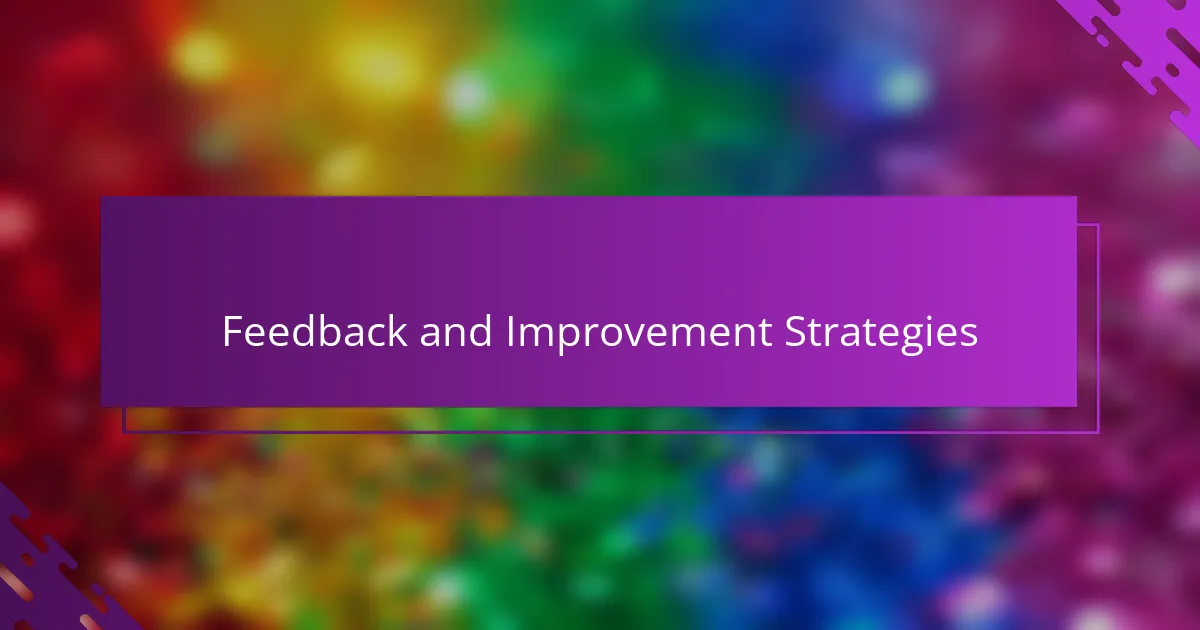
Feedback and Improvement Strategies
Getting feedback was a game changer for me. At first, I was hesitant to share my recordings, worried about criticism. But when I finally did, I discovered how valuable honest opinions are—they showed me blind spots I never noticed, like a tendency to speed up during intense scenes. Hasn’t receiving constructive feedback ever surprised you with insights you missed?
I also learned to embrace self-review as a daily habit. Listening back to my narrations felt awkward initially, like hearing my voice on a voicemail. Yet, over time, it became a reflective practice where I pinpointed areas to improve, like smoother transitions or clearer character differentiation. It made me realize how powerful self-awareness is in honing any skill.
To keep improving, I set small, focused goals—like mastering one tricky character voice per week or reducing filler sounds in pauses. These manageable targets kept me motivated and gave me a sense of accomplishment to build on. Maybe breaking big challenges into bite-sized steps could work for you too? It’s certainly helped me stay on track without feeling overwhelmed.
